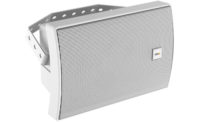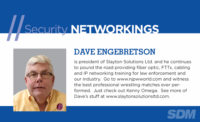The days will be quickly past when just hanging a camera and pointing it at a room or door will be “good enough” for new technology facial and movement recognition services. We have all seen the explosive growth of surveillance video installation and usage. The next step is to provide high-resolution cameras with proper mounting height to enable accurate facial recognition now or in the future.
How many times have you seen a recorded video that shows the tops of potential perpetrators’ heads and not their faces? Seeing a baseball cap isn’t going to provide users or authorities with a positive or probable recognition of an individual.
Facial recognition programs are increasingly being used by airlines to identify passengers. Delta, JetBlue, and Air France are all offering the usage of facial recognition at certain airports.
It sounds pretty simple. Once a passenger “registers” their face with the airline, the frequent flyer can simple walk up to an identification terminal. Once the face is identified, the system knows what flight the passenger has purchased, and spits out a bag tag if requested. At the gate the passenger simply looks at the scanner and is allowed onto the flight and receives a receipt.
As would be expected, the usage of this new technology is being questioned by privacy protection organizations such as the Electronic Frontier Foundation (EFF). “We are heading into a world where the government, or a conglomeration of corporations, knows potentially everywhere you’ve been, who you were with, and what you were doing at the time,” stated Adam Schwartz of the EFF.
The U.S. Customs and Border Patrol (CBP) has tested these software systems and have seen 97 percent accuracy when comparing video feeds of peoples’ faces to their passport photos. Plans for the rollout of this technology are to apply it to international travel, and they will likely integrate facial recognition into the TSA PreCheck system.
Currently the CBP uses passport photos for facial software comparison. Foreign nationals have their photo taken every time they enter the U.S., and the images are saved for 75 years.
This is another technology that will likely be used in future electronic management and security systems. A typical application might be using dual-identity verification such as a key card and the person’s face. A stolen access control card would then become useless in terms of getting unknown people past an access-controlled entryway.
The need for higher resolution images and video can become part of an “image quality” presentation to your potential customers. In a world of DIY cameras and cheap devices, showing your customer that your company installs quality may well help you get the sale.
The Department of Homeland Security issued a document called the “Digital Video Quality Handbook.” The updated version is available here
The DHS classifies video images based on three common uses. The first is observation, which is primarily for live viewing of a location. Forensic review is the ability to review and see what has happened during a particular recorded video. And recognition provides the densest pixel counts so that individuals can be identified.

Using this information, an astute salesperson can utilize the “higher authority” method of closing the sale with higher quality and quantity of video cameras. When a potential customer balks at a proposal that provides for higher resolution cameras (likely at a higher cost) the salesperson can show the customer the DHS recommendations, and inform them that various sources estimate the usable life of an installed IP camera to be six to 10 years. Does the customer really want to invest in cheaper video products that simply won’t work with any new recognition or video processing programs? Then the salesperson should shut up and make the customer voice their interest or concern.
Remember, during a sales call, the likelihood of a completed sale can depend on who speaks more, the salesperson or the customer. If you get your customer to think about quality and investment, better cameras and systems will result.










